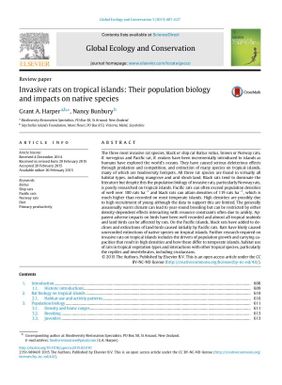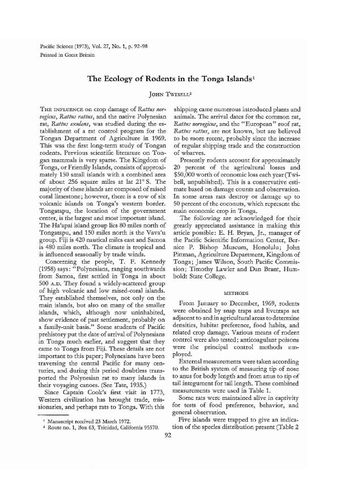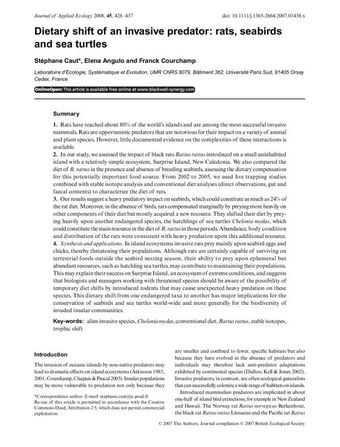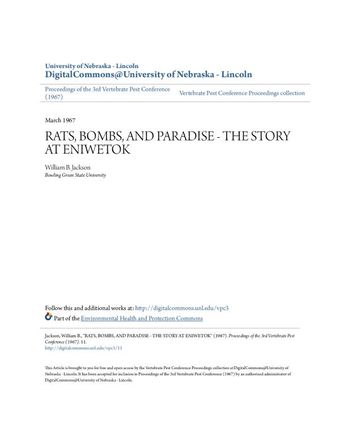Invasive rats on tropical islands: their population biology and impacts on native species
- Description:
- The three most invasive rat species, black or ship rat Rattus rattus, brown or Norway rats, R. norvegicus and Pacific rat, R. exulans have been incrementally introduced to islands as humans have explored the worlds oceans. They have caused serious deleterious effects through predation and competition, and extinction of many species on tropical islands, many of which are biodiversity hotspots. All three rat species are found in virtually all habitat types, including mangrove and arid shrub land. Black rats tend to dominate the literature but despite this the population biology of invasive rats, particularly Norway rats, is poorly researched on tropical islands. Pacific rats can often exceed population densities of well over 100 rats ha?1 and black rats can attain densities of 119 rats ha?1, which is much higher than recorded on most temperate islands. High densities are possibly due to high recruitment of young although the data to support this are limited. The generally aseasonally warm climate can lead to year-round breeding but can be restricted by either density-dependent effects interacting with resource constraints often due to aridity. Apparent adverse impacts on birds have been well recorded and almost all tropical seabirds and land birds can be affected by rats. On the Pacific islands, black rats have added to declines and extinctions of land birds caused initially by Pacific rats. Rats have likely caused unrecorded extinctions of native species on tropical islands. Further research required on invasive rats on tropical islands includes the drivers of population growth and carrying capacities that result in high densities and how these differ to temperate islands, habitat use of rats in tropical vegetation types and interactions with other tropical species, particularly the reptiles and invertebrates, including crustaceans.
- Display date:
- 2015
- Collections:
- Secretariat of the Pacific Regional Environment Programme (SPREP)
- Publisher:
- Elsevier
- Content partner:
- Secretariat of the Pacific Regional Environment Programme (SPREP)
- Availability:
- Not specified
-
Copyright status: All rights reservedFind out more about what you are able to do with this itemThis item is all rights reserved, with means you'll have to get permission from Secretariat of the Pacific Regional Environment Programme (SPREP) before using it. For more information, please see our use and reuse page.What can I do with this item?Non-infringing useNZ copyright law does not prevent every use of a copyright work, and this item may be hosted by an international institute or organisation. You should consider what you can and cannot do with a copyright work.No sharingYou may not copy and/or share this item with others without further permission. This includes posting it on your blog, using it in a presentation, or any other public use.No modifyingYou are not allowed to adapt or remix this item into any other works.No commercial useYou may not use this item commercially.
Related items
Welcome and warm Pasifik greetings
The information on this site has been gathered from our content partners.
The names, terms, and labels that we present on the site may contain images or voices of deceased persons and may also reflect the bias, norms, and perspective of the period of time in which they were created. We accept that these may not be appropriate today.
If you have any concerns or questions about an item, please contact us.



